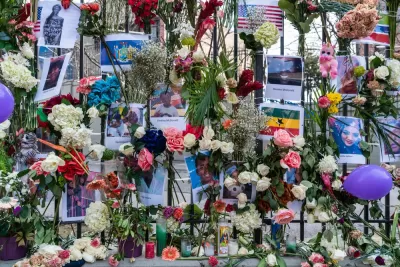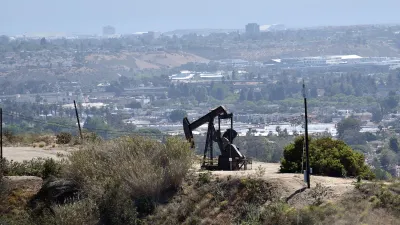New legislation gives the federal agency power to identify the causes of deadly fires and recommend improvements.

The U.S. Fire Administration, part of the Federal Emergency Management Agency (FEMA), will use newly granted investigatory powers to identify buildings at high risk of fire and issue recommendations in an effort to avoid fatal fires like the one that killed 17 people at the Twin Parks North West housing complex a year ago.
As Jeffery C. Mays and Téa Kvetenadze report in the New York Times, “The blaze was sparked by an electric space heater that ignited a mattress, but the victims died of smoke inhalation, not the fire itself. Investigators believe that deadly smoke was able to spread to the upper floors of the 19-story building because of faulty self-closing doors.”
“Just like there is a federal process for investigating airplane incidents and cyber incidents, there ought to be a comparable process for investigating fire incidents in the hopes of translating the lessons learned into policies and practices that will prevent future fires and save lives.”—U.S. Representative Ritchie Torres (D-NY)
The problem is particularly acute in older buildings, many of which provide affordable housing for low-income households. “More than a million American households live in public housing units, and many lack lifesaving measures like sprinklers or hard-wired smoke detectors,” the article points out. Lori Moore-Merrell, head of the U.S. Fire Administration, is quoted as saying that “too many older buildings that serve as affordable housing are grandfathered in and not required to meet the building codes of new construction because of the myth that the improvements are too expensive.” The legislation does not specify any enforcement mechanisms beyond “cooperation with appropriate federal, state, local, tribal, and territorial authorities.”
FULL STORY: Year After Deadly Bronx Blaze, a Plan to Combat ‘America’s Fire Problem’

Americans May Be Stuck — But Why?
Americans are moving a lot less than they once did, and that is a problem. While Yoni Applebaum, in his highly-publicized article Stuck, gets the reasons badly wrong, it's still important to ask: why are we moving so much less than before?

Study: Maui’s Plan to Convert Vacation Rentals to Long-Term Housing Could Cause Nearly $1 Billion Economic Loss
The plan would reduce visitor accommodation by 25,% resulting in 1,900 jobs lost.

Placekeeping: Setting a New Precedent for City Planners
How a preservation-based approach to redevelopment and urban design can prevent displacement and honor legacy communities.

San Diego Swaps Parking Lane for Kid-Friendly Mini Park
The block-long greenway will feature interactive play equipment and landscaping.

Tracking the Invisible: Methane Leaks From LA’s Neighborhood Oil Sites
Environmental advocates are using infrared technology to monitor and document methane leaks from neighborhood oil sites, filling regulatory gaps and pushing for stronger protections to safeguard community health and the climate.

Montana Bill Promotes Parking Reform
A bill before the Montana state senate would bar cities from requiring more than one parking spot per new housing unit.
Urban Design for Planners 1: Software Tools
This six-course series explores essential urban design concepts using open source software and equips planners with the tools they need to participate fully in the urban design process.
Planning for Universal Design
Learn the tools for implementing Universal Design in planning regulations.
Caltrans
Heyer Gruel & Associates PA
Institute for Housing and Urban Development Studies (IHS)
City of Grandview
Harvard GSD Executive Education
Salt Lake City
NYU Wagner Graduate School of Public Service
City of Cambridge, Maryland





























